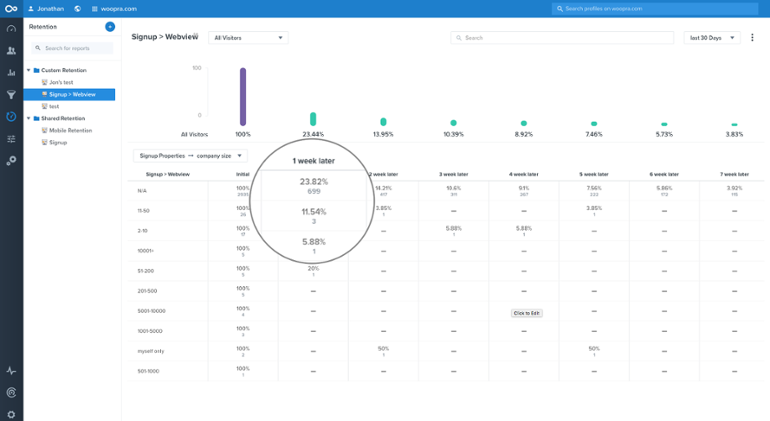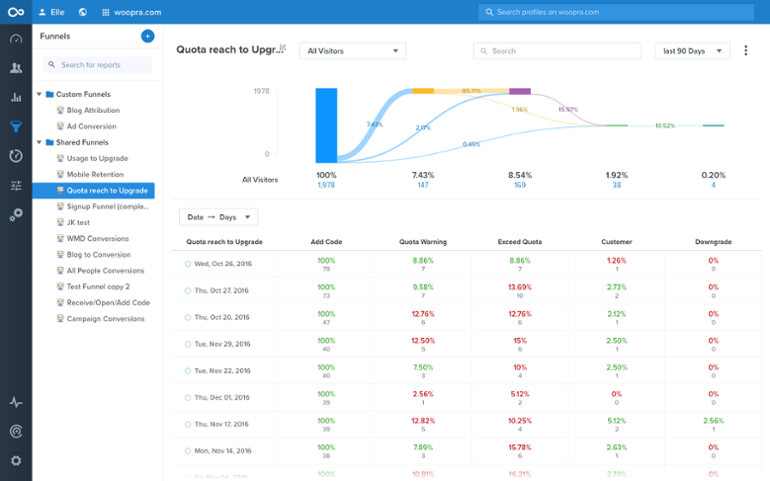There are times when Product Management can feel like a thankless role. One in which the delicate balance between innovation and necessity treads a fine line and difficult (often unpopular) decisions must be made on a daily basis. But the evolution of data offers new opportunities for product managers to play an integral role in supporting the organization.
The product manager has more insight than ever before into the customer experience, empowering them with the ability to have a measurable and substantial impact on the success of every department. And, while these functions may not be outlined in your job description, there are unique ways that product managers can harness behavioral data to help fellow employees make smarter, more efficient, data-driven decisions.
“Harness behavioral data to help fellow employees make smarter, more efficient, data-driven decisions.”
Here are six tactics that every product manager can employ to grow from the unsung hero to every employee’s best friend:
1) Tie Product Usage Directly to Revenue Impact
Sales teams get applause for closing deals and upselling customers. But, this wouldn’t be possible without the product features behind the scenes that are driving adoption and conversion. A product manager is just as responsible for delivering revenue as members of the sales staff. And with the right combination of analytics, you can quickly show how certain features impact sales revenue and beyond.
Next time you deploy a major feature, measure these metrics to tie product engagement data to dollars:
- *New Customer Conversion — *Of those who are actively engaging with the new feature, how many are converting to paying customers?
- *Current Customer Retention — *Of those who are actively engaging with the new feature, are they more or less likely to remain a paying customer over time?
- *Overall Engagement — *Measure the percentage of users actively engaging with the new feature.

After sufficient time has passed, you’ll be able to identify exactly how many users are gaining value from specific features and report on revenue gained as a result.
2) Accelerate the Sales Cycle with Product Engagement Data
Product managers have more insight into how specific users engage with the product than anyone else in the organization. Because of this, you’re in the prime position to know what actions indicate that a user is more or less likely to upgrade or have a higher propensity to purchase.
Often called the Product Qualified Lead (PQL), these heavily engaged users can convert at close to 50 percent! By identifying what specific activities within the product lead to conversions, you can feed these PQLs to the sales team and accelerate the sales process.
For example, at Woopra, we’ve identified PQLs as users who:
- Download at least 10 reports per week
- Invite a member of their team to collaborate
- Track at least 30,000 actions per month

When users hit this identified threshold, we automatically update the lead status field in Salesforce and trigger a Slack notification. This lets our sales team know that this customer is ready to upgrade and to reach out for a conversation.
3) Enable Marketing to Deliver Personalized Promotions with Behavioral Data
The biggest challenges marketers face with personalized messaging are gaining insight quickly enough (40 percent), having enough data (39 percent) and inaccurate data (38 percent). Yet, a recent McKinsey study found that, “companies who put data-driven personalization at the center of marketing and sales decisions improve marketing ROI by 15%-20% percent or more!”
Product managers can play an integral role in helping their product marketing teams access real-time data to deliver hyper-relevant messaging, at a global scale.
- Find gaps in feature usage and trigger personalized promotions to deliver additional value.
- Identify people who were once engaged customers, see where they are experiencing difficulty and tailor documentation to re-engage them.
For example, at Woopra we identified current customers who were actively using our AppConnect integrations but did not have the Salesforce integration setup. We cross-referenced this data with the firmographic and technographic data available in Datanyze. From here, we were able to see all customers who could potentially be gaining value from our Salesforce integration and targeted them with a personalized email campaign.

4) Help Customer Success Be Proactive with Bug Notifications
Stop waiting for bugs to be reported before taking action. Once a feature is released, you can monitor usage and bugs within the product and automatically trigger a notification to your customer success team when a user encounters an issue. This enables the support team to be proactive in their responses and prepared with solutions before a bug is ever reported!
5) Validate Personas and Campaign Effectiveness to Support Lead Gen Efforts
“Customer obsession is easy to talk about but hard to do. It requires remaking your company, systematically, to re-orient each element toward improved customer experience.”
Buyer personas represent fictional representations of your ideal customers. Having accurate personas enables everyone — from sales and marketing to product and customer success — to understand the type of customer you’re trying to attract and who you’re building the product for.
Personas are built through research with existing customers, purchasing trends and information gathered through the lead generation process. The problem with this is that personas evolve and change over time and businesses rarely step back to readjust exactly who they’re building targeting and why.

Product managers can utilize the data at their disposal to understand and validate buyer personas. By looking at the types of customers that are most successful with your product, what actions they take and what specific problems you solve for them — you can quickly identify micro-personas within your product and use this information to guide messaging.
- Automate customized triggers based on a persona’s behavior to send emails, push notifications or messaging within the product.
- Monitor the campaign sources of leads converting within the product and compare those with the personas to identify which campaigns convert which personas.
- Feed personas activity and information to marketing teams to support the efforts of lead generation and targeted messaging.
6) Accelerate Customer Knowledge Throughout the Organization
You may not speak to customers on a daily basis, but that doesn’t mean you don’t have a front seat into the customer experience. Harnessing the power of behavioral data will enable you to visualize every touchpoint throughout the customer journey and take action in ways that no other department can.
- Listen to your customer data to identify needs, challenges and areas for improvement.
- Conduct usability testing by watching as users navigate through your product in real-time.
- Develop a data-driven roadmap, fueled by insight-driven interactions, that favors a cohesive customer experience.
- Turn that knowledge into actionable insight that your entire organization can gain value from.
Utilizing data within your own team can help to define the product roadmap, A/B test new features, optimize based on behavior and inform your next sprint. But, beyond your own team, keeping a pulse on customer data will empower you to fuel the collective intelligence of your entire organization. And, if that isn’t heroic, I don’t know what is!
Product Managers Rely on Product Analytics
None of the above can be done without product analytics and in-depth web analytics, both of which deliver critical insights into user behavior. Personalized promotions, identification of PQL, and validating customer personas rely heavily on behavioral data gathered through product analytics. Using product analytics, product managers can empower not only their own team, but the entire organization to continuously optimize the product and customer journey.



